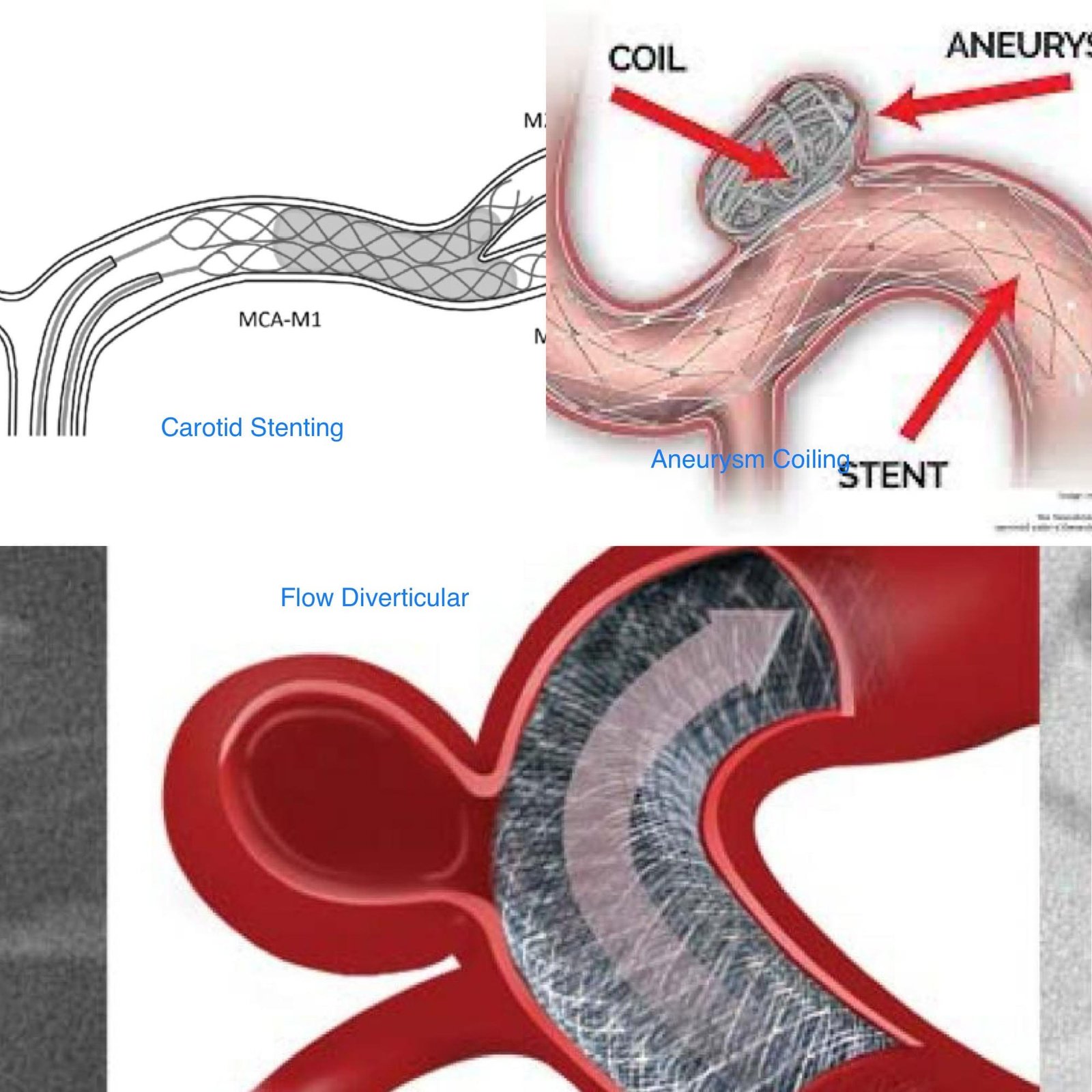Endovascular Procedures

What is it?
Endovascular procedures are minimally invasive surgical techniques used to treat conditions affecting the blood vessels of the brain and spine. These procedures involve accessing the blood vessels through small incisions in the groin or wrist and navigating tiny catheters and instruments to the site of the problem within the blood vessels.
Symptoms:
Symptoms of conditions that may require endovascular procedures depend on the specific diagnosis but may include headaches, dizziness, vision changes, weakness or numbness in the limbs, difficulty speaking or understanding language, and in severe cases, seizures or loss of consciousness.
Primary Symptoms:
The primary symptoms that may indicate a need for endovascular procedures include:
- Sudden severe headache, particularly with a thunderclap onset, which may indicate a ruptured aneurysm.
- Weakness, numbness, or paralysis in the face, arms, or legs, which may indicate a stroke or transient ischemic attack (TIA).
- Visual disturbances, such as blurry vision or double vision, which may indicate a vascular abnormality compressing the optic nerve or other structures.
Diagnosis/Treatment:
- Diagnosis typically involves a thorough neurological examination, medical history, and imaging studies such as CT scans, MRI, or angiography to evaluate the blood vessels and identify any abnormalities.
- Treatment options may include medication, lifestyle modifications, or endovascular procedures to repair aneurysms, remove blood clots, open blocked vessels, or close abnormal connections in the blood vessels.
What to Expect After Surgery:
- After endovascular procedures, patients can typically expect a shorter hospital stay and quicker recovery compared to traditional open surgery.
- Recovery time varies depending on the specific procedure performed and the individual patient’s condition, but most patients can expect to gradually resume normal activities within a few days to weeks.
- Close follow-up with healthcare providers and imaging studies may be necessary to monitor the success of the procedure and detect any potential complications.
Risk & Complications:
- As with any surgery, there are risks associated with endovascular procedures, including bleeding, infection, blood vessel injury, allergic reaction to contrast dye, and complications related to anesthesia.
- Additionally, there may be a risk of procedural complications such as blood vessel perforation, clot formation, or incomplete treatment of the underlying condition.
- However, complications are relatively rare, and the benefits of endovascular procedures often outweigh the risks, particularly when they offer a less invasive alternative to traditional open surgery for treating vascular conditions of the brain and spine.
Brain Treatments
About Dr. Bharat
Dr Bharat Shinde completed his M.Ch Neurosurgery from the National Institute Of Mental Health And Neurosciences (NIMHANS), Bangalore which is an institute of National importance.
